Last week we visited my mother-in-law in north central Wisconsin, making day trips to different destinations: the Wisconsin Dells, Marshfield, and Dells of the Eau Claire. We did so much in so little time, in fact, that I am writing separate posts to describe our doings. The trip from Iowa to Wisconsin, however, was a sightseeing activity in itself. We drove north on Interstate 35 all the way to Minnesota, then sliced across the southeastern corner of the state on Interstate 90 through Albert Lea. Finally, we crossed the Mississippi River to LaCrosse, Wisconsin before continuing northeast to Rib Mountain (near Wausau), where John’s mother lives. The three states—Iowa, Minnesota and Wisconsin—all share a piece of the Mississippi River Valley, yet are so unique that you can tell where you are by the geography.
At the northernmost point in Iowa, just before you enter south central Minnesota, there is a barn-shaped welcome center called Top of Iowa.
You’ll find restrooms and vending machines downstairs, but if you climb the stairs, you’ll discover sightseeing brochures, booklets and maps about every interesting spot in Iowa that you can imagine. Sprinkled throughout Iowa, in fact, are attractive welcome centers that provide free visitor information. There is also a gift shop called the Barn Boutique that features the work of local area artisans.
When we have visited the Top of Iowa barn in the past, John has enjoyed a cappuccino in the coffee shop while waiting for me to finish browsing in the gift shop known as the Barn Boutique.
I always enjoy browsing through the crafts, which are made by local area artisans.
The gift shop features beautiful, sturdy baskets woven by Amish families. Family members usually sign the underside of their work. I own several of these Amish baskets, although mine were purchased elsewhere.
I was amused by the book below and must admit that some of the expressions in How to Talk Midwestern do not sound altogether unfamiliar. Most Midwesterners won’t cop to speaking with a so-called accent, but I realized after relocating from southern California back to the Midwest (where John and I grew up) more than 20 years ago that we have a distinctive pattern to our patter, along with some interesting expressions that are not used elsewhere. Do you know what it means to live in the “boonies?” Did you know that a “guy” can mean anyone of any gender or age? That a mush mellon (or muskmelon) is a canteloupe, or that Monkey Ward is another name for the store called Montgomery Ward? (Does that store even exist anymore?) Did you know that Midwesterners sometimes swallow their vowels or consonants, saying “Floorda” for Florida, or “eve-nun” for evening? Natives of Milwaukee, where I was born, pronounce the city’s name as “M’WAW-kee,” eliminating the “l.” Many Iowans refers to their state as “AH-wah,” eliminating the “i,” or “EYE-wah,” eliminating the “o.”
We noticed that in north central Iowa, you’ll see vast stretches of farm and wind fields.
As soon as you cross over into south central Minnesota, you continue to see farms, but you’ll also notice thick stands of trees, acting as sturdy wind breaks.
Much of the Midwest was at one time covered by glaciers, but as you descend into the Mississippi River Valley, the road on either side is edged with sedimentary bluffs and roadcuts of limestone, sandstone and dolomite, which represent areas the glaciers may never have touched. According to a sign posted at the Enterprise rest stop in southeastern Minnesota:
These rock formations were deposited by oceans which have covered the area several times in the past, the most recent some 70 million years ago. These types of stone are easily eroded by groundwater and there are numerous sinkholes and even caves to be found in the area.
Large cranes and construction debris provide evidence of a new interstate crossover being built in the vicinity of the Mississippi River between Dresbach, Minnesota and LaCrosse, Wisconsin.
If you stop at the welcome center in Dresbach, you can watch the river traffic.
Opposite Dresbach, on the other side of the Mississippi River, is LaCrosse, Wisconsin. As you drive along the highway, you continue to see farmland. One farm is prettier than the next, and in the background loom forested hills.
Both Minnesota and northern Wisconsin are known for their forests and lakes. I stopped in Necedah to snap this sunset shot of the lake. I had to do so quickly because the lake flies and mosquitoes swarmed.
Our journey from Urbandale, Iowa to Rib Mountain, Wisconsin ordinarily takes about 7-1/2 hours by car. It’s a full day of driving, in other words, but being able to enjoy the lay of the land—it’s a pretty drive anytime of the year—makes the time fly quickly.
© 2013 Judy Nolan. All rights reserved.


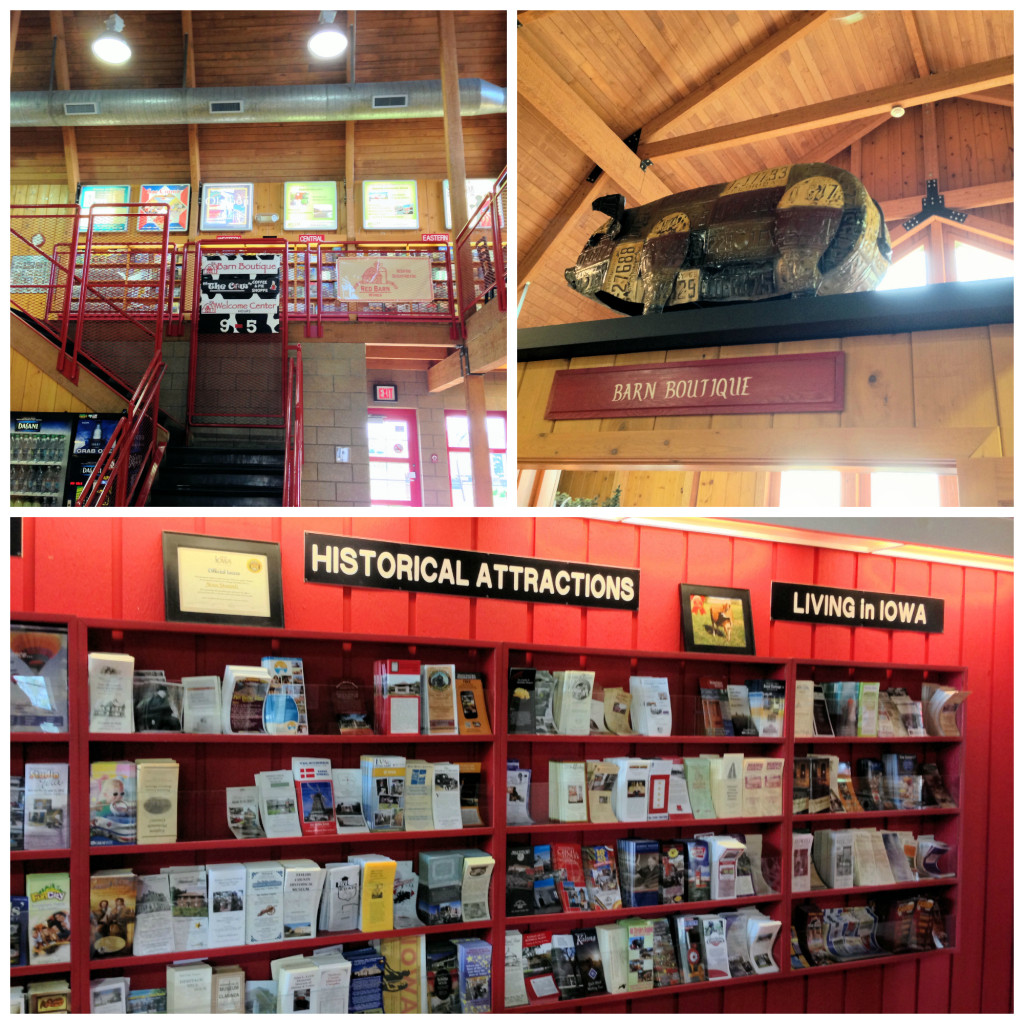
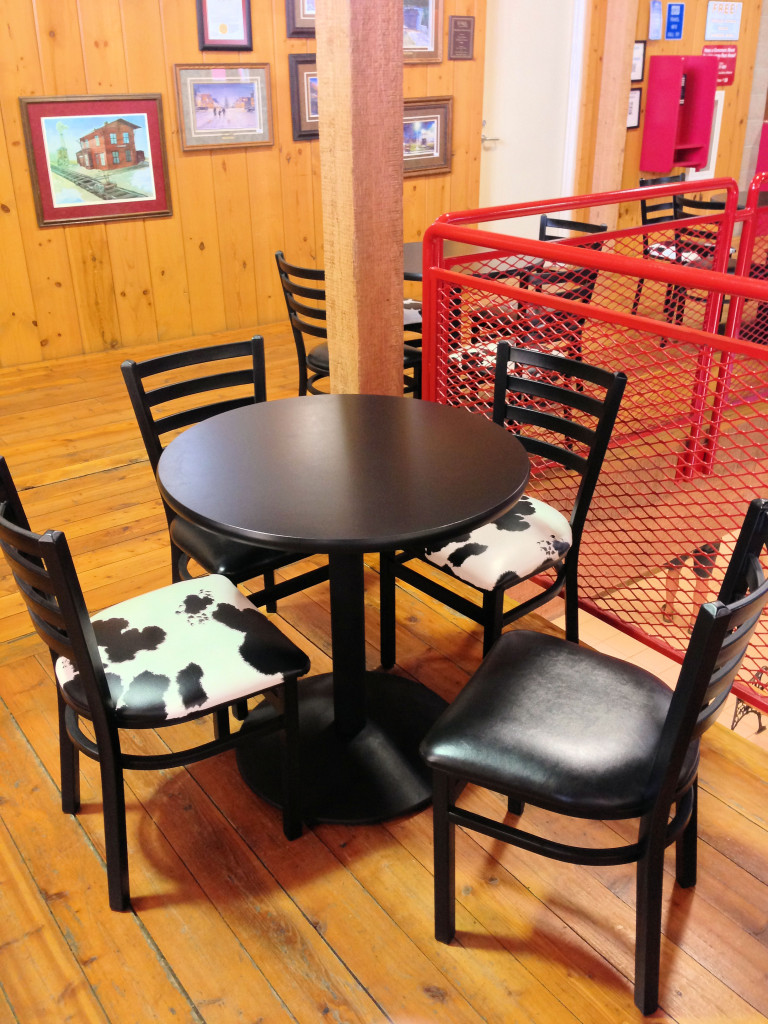
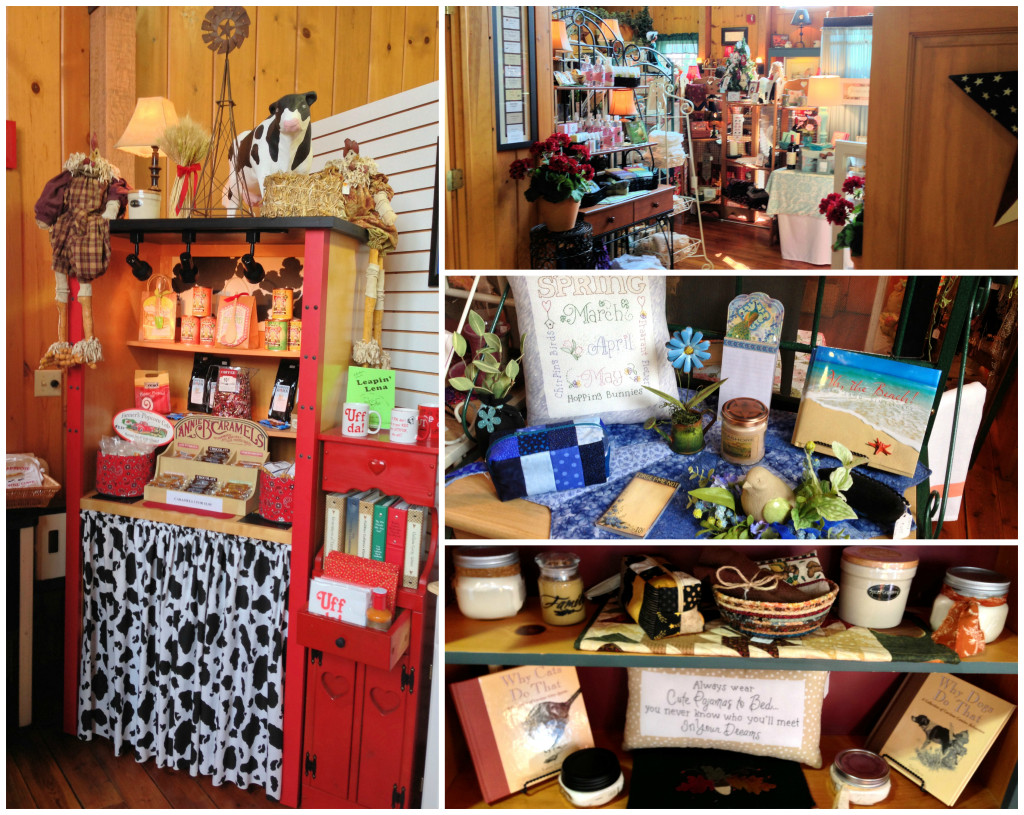


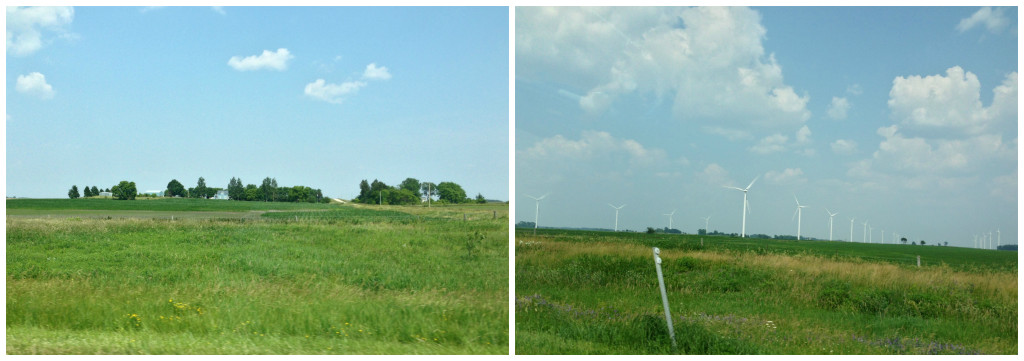
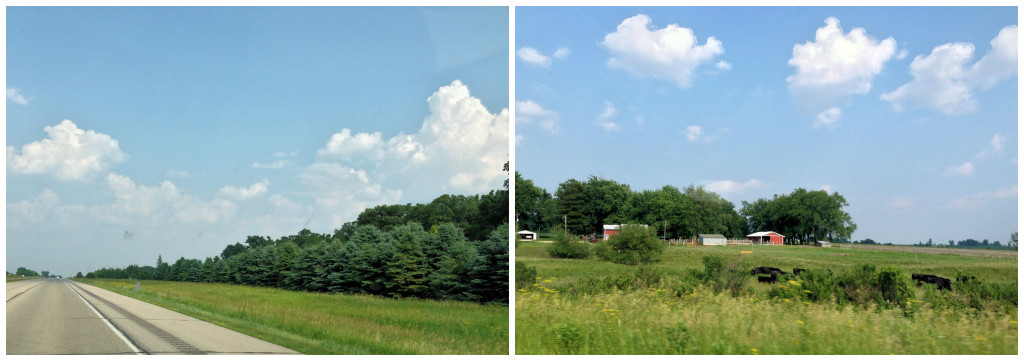

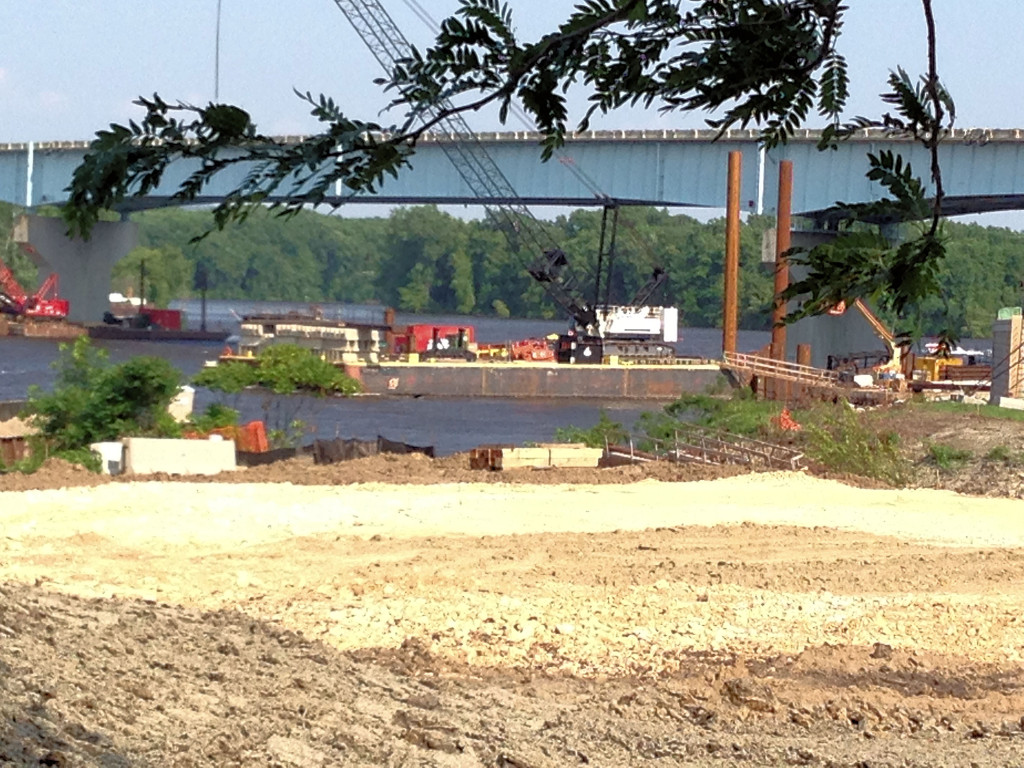

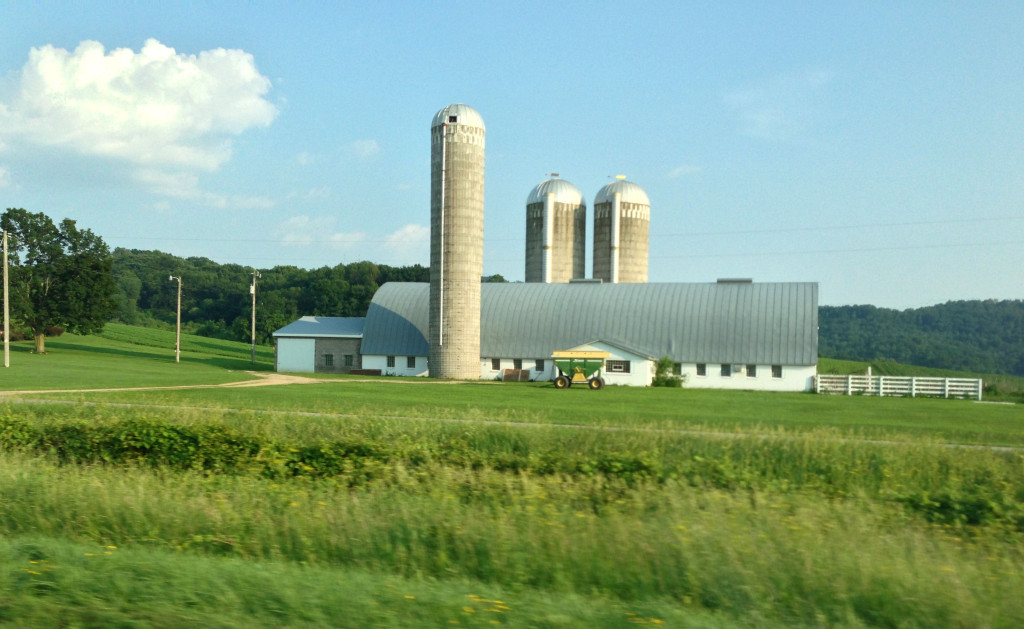
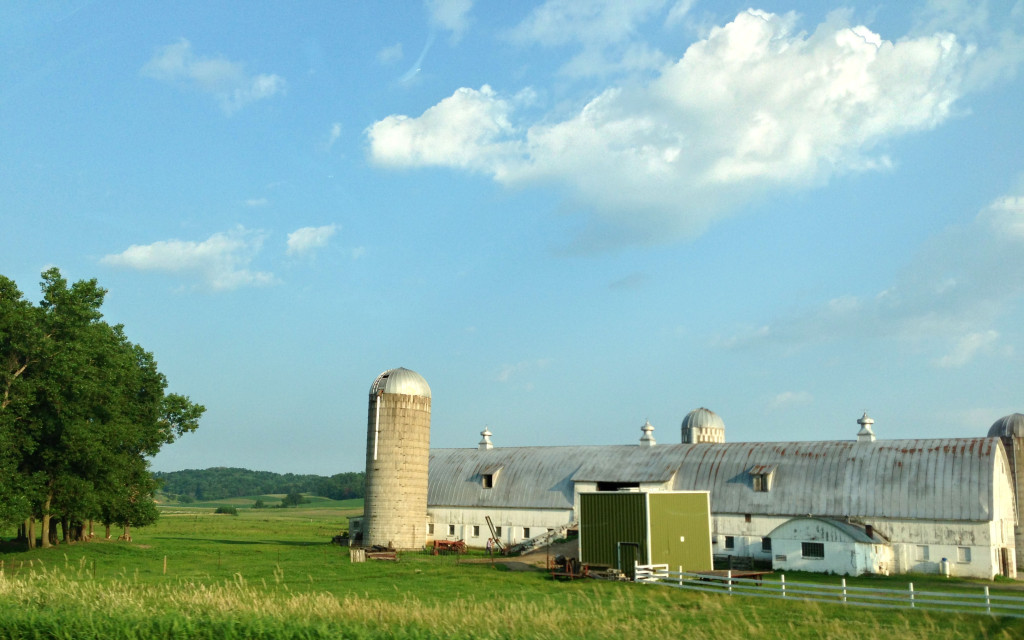


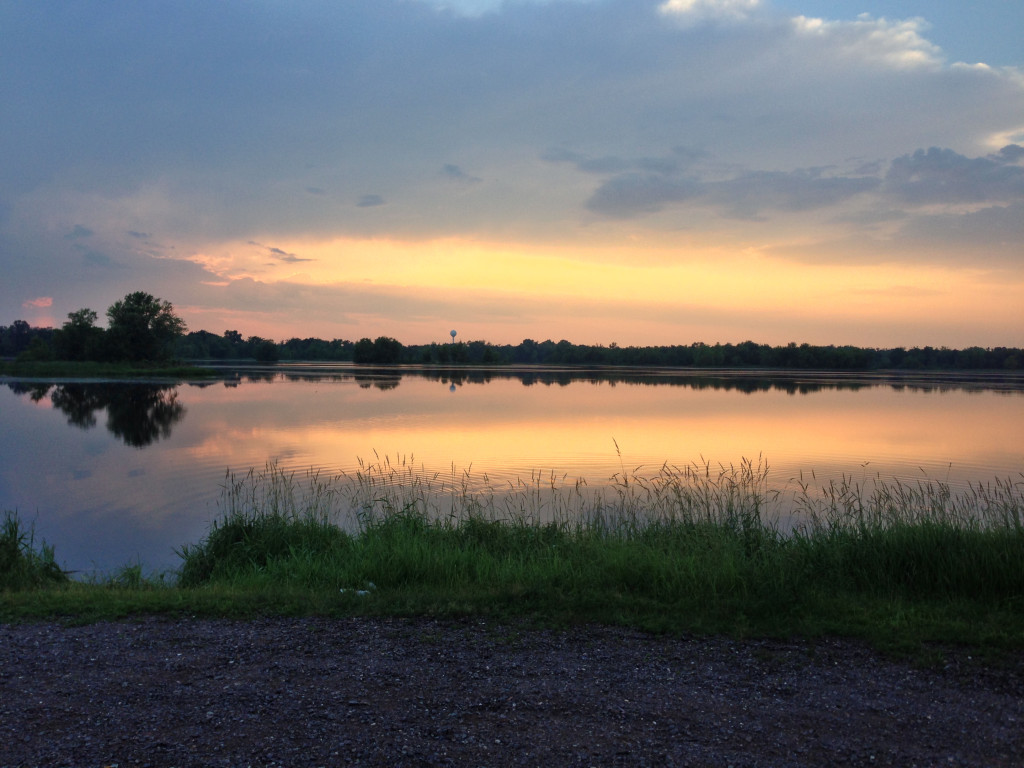
Love those holstein cowhide (vinyl, I hope) chair cushions. And although I speak Midwestern fluently, I’m sure that book would be fun. (My brother says you can tell if someone grew up on a farm by asking them what they call that machine that weeds corn. If they say “CULL uh vay ter,” they are a farm kid. If they pronounce the “t”, they are a city kid.) Love your sunset shot!! I miss lakes, but not the mosquitoes.
I know about the boonies, but the rest were new to me! We have some of our own expressions in the South. For example, in some areas, a Coke is just a soda. If you say you want a Coke, you might get asked if you’d prefer root beer, cola, etc.
LOL, I’ve been to the “boonies” several times To city folk, they probably think where I live is the boonies!
To city folk, they probably think where I live is the boonies!
Great sunset photo!
That is some visitors’ center!
I have noticed that there are some Midwestern “accents.” like Foor-da. I’ve lived in the Midwest for a long time now and have trained myself to use some of those pronunciations.
I’ve never been in the parts of the states you describe. The farm photos look so idyllic and the sunset is lovely.